Factors associated with bronchiectasis in patients with uncontrolled asthma; the NOPES score: a study in 398 patients
- PMID: 29548297
- PMCID: PMC5857069
- DOI: 10.1186/s12931-018-0746-7
Factors associated with bronchiectasis in patients with uncontrolled asthma; the NOPES score: a study in 398 patients
Abstract
Background: Some studies have reported a high prevalence of bronchiectasis in patients with uncontrolled asthma, but the factors associated with this condition are unknown. The objective of this study was to determine the prevalence of bronchiectasis in uncontrolled moderate-to-severe asthma and to identify risk factors and their correlation with bronchiectasis in these patients.
Methods: This is a prospective study of data from consecutive patients with uncontrolled moderate-to-severe asthma. Diagnosis of bronchiectasis was based on high-resolution computed tomography. A prognostic score was developed using a logistic regression model, which was used to determine the factors associated with bronchiectasis.
Results: A total of 398 patients (60% with severe asthma) were included. The prevalence of bronchiectasis was 28.4%. The presence of bronchiectasis was associated with a higher frequency of chronic expectoration (OR, 2.95; 95% CI, 1.49-5.84; p = 0.002), greater severity of asthma (OR, 2.43; 95% CI, 1.29-4.57; p = 0.006), at least one previous episode of pneumonia (OR, 2.42; 95% CI, 1.03-5.69; p = 0.044), and lower levels of FeNO (OR, 0.98; 95% CI, 0.97-0.99; p = 0.016). The NOPES score was developed on the basis of these variables (FeNO[cut off point 20.5 ppb], Pneumonia, Expectoration and asthma Severity), and it ranges from 0 to 4 points, where 0 means "no risk" and 4 corresponds to "high risk". The NOPES score yielded an AUC-ROC of 70% for the diagnosis of bronchiectasis, with a specificity of 95%.
Conclusions: Almost a third of the patients with uncontrolled moderate-to-severe asthma had bronchiectasis. Bronchiectasis was related to the severity of asthma, the presence of chronic expectoration, a previous history of pneumonia, and lower levels of FeNO. The NOPES score is an easy-to-use scoring system with a high prognostic value for bronchiectasis in patients with uncontrolled moderate-to-severe asthma.
Keywords: Asthma; Bronchiectasis; NOPES; Prevalence; Risk factors.
Conflict of interest statement
Ethics approval and consent to participate
Written informed consent was obtained from all participants. The study was approved by our hospital’s Ethics Committee (approval:008_OCT_PI2_bronquiectasias).
Consent for publication
Not applicable.
Competing interests
The authors have reported that no potential conflicts of interest exist with any companies/organizations whose products or services may be discussed in this article.
Publisher’s Note
Springer Nature remains neutral with regard to jurisdictional claims in published maps and institutional affiliations.
Figures
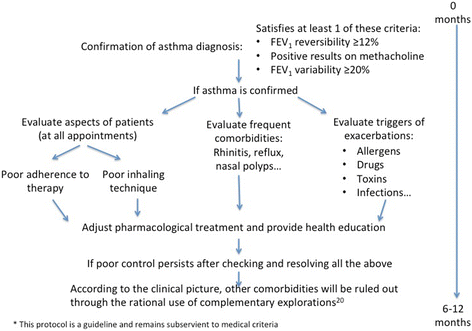
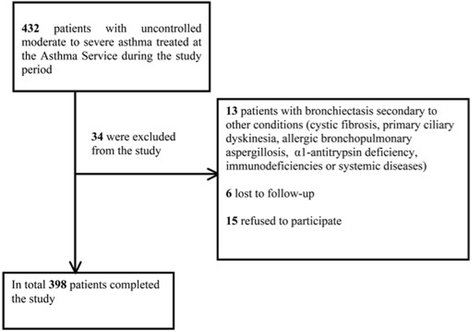
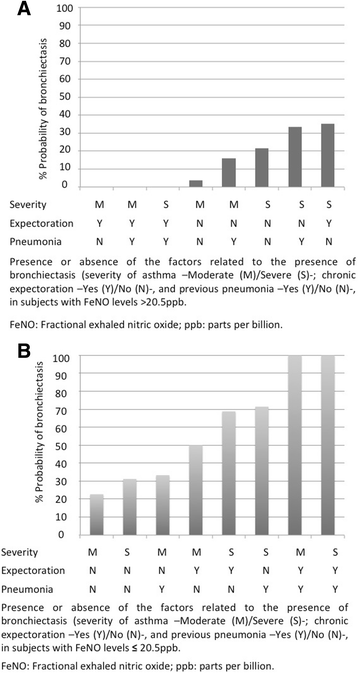
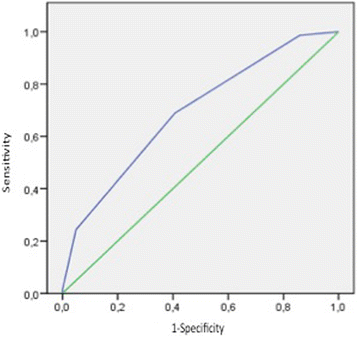
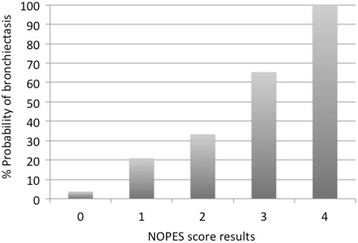
References
-
- Global Strategy for Asthma Management and Prevention, Global Initiative for Asthma (GINA), 2016. http://www.ginasthma.org/.
-
- Martínez-García MÁ, Máiz L, Olveira C, Girón RM, de la Rosa D, Blanco M, et al. Spanish guidelines on the evaluation and diagnosis of bronchiectasis in adults. Arch Bronconeumol. 2017;(17):30272–7. 10.1016/j.arbres.2017.07.015. - PubMed
Publication types
MeSH terms
LinkOut - more resources
Full Text Sources
Other Literature Sources
Medical

